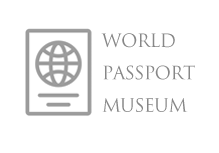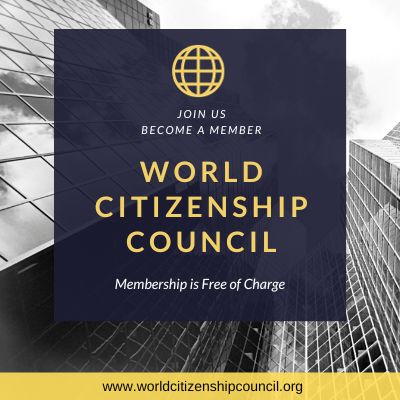A passport is a travel document, usually issued by a country’s government, that certifies the identity and nationality of its holder primarily for the purpose of international travel.
But what is the history of passport and where did it come from? The history of origins of passport is pretty fascinating, infact the oldest known passport used two thousand years ago. It was only in 1414, King Henry V of England is credited with having invented what some consider the first passport.
Before the first world war, a passport was not necessary to travel abroad, anybody could travel around the globe freely. During World War I, European governments introduced border passport requirements for security reasons, and to control the emigration of people with useful skills. A hundred years later, today Immigration has become a major topic for discussions, leading to Brexit and chaos in US after Trump was elected.
450 BC
One of the earliest known references to paperwork that served in a role similar to that of a passport is found in the Hebrew Bible. Nehemiah 2:7-9, dating from approximately 450 BC, states that Nehemiah, an official serving King Artaxerxes I of Persia, asked permission to travel to Judea, the king granted leave and gave him a letter “to the governors beyond the river” requesting safe passage for him as he traveled through their lands.
632-1258 AD
In the medieval Islamic Caliphate, a form of passport was the bara’a, a receipt for taxes paid. Only people who paid theirzakah (for Muslims) or jizya (for dhimmis) taxes were permitted to travel to different regions of the Caliphate; thus, thebara’a receipt was a “traveler’s basic passport.” During the medieval period, three major caliphates succeeded each other: the Rashidun Caliphate (632–661), the Umayyad Caliphate (661–750) and the Abbasid Caliphate (750–1258).
Medieval – 5th to the 15th century
Etymological sources show that the term “passport” is from a medieval document that was required in order to pass through the gate (or “porte”) of a city wall or to pass through a territory.In medieval Europe, such documents were issued to foreign travelers by local authorities (as opposed to local citizens, as is the modern practice) and generally contained a list of towns and cities the document holder was permitted to enter or pass through. On the whole, documents were not required for travel to sea ports, which were considered open trading points, but documents were required to travel inland from sea ports.
1414
King Henry V of England is credited with having invented what some consider the first passport in the modern sense, as a means of helping his subjects prove who they were in foreign lands. The earliest reference to these documents is found in a1414 Act of Parliament. In 1540, granting travel documents in England became a role of the Privy Council of England, and it was around this time that the term “passport” was used. In 1794, issuing British passports became the job of the Office of theSecretary of State. The 1548 Imperial Diet of Augsburg required the public to hold imperial documents for travel, at the risk of permanent exile.
1914
A rapid expansion of railway infrastructure and wealth in Europe beginning in the mid-nineteenth century led to large increases in the volume of international travel and a consequent unique dilution of the passport system for approximately thirty years prior to World War I. The speed of trains, as well as the number of passengers that crossed multiple borders, made enforcement of passport laws difficult. The general reaction was the relaxation of passport requirements. In the later part of the nineteenth century and up to World War I, passports were not required, on the whole, for travel within Europe, and crossing a border was a relatively straightforward procedure. Consequently, comparatively few people held passports.
During World War I, European governments introduced border passport requirements for security reasons, and to control the emigration of people with useful skills. These controls remained in place after the war, becoming a standard, though controversial, procedure. British tourists of the 1920s complained, especially about attached photographs and physical descriptions, which they considered led to a “nasty dehumanization”.
1920
In 1920, the League of Nations held a conference on passports, the Paris Conference on Passports & Customs Formalities and Through Tickets. Passport guidelines and a general booklet design resulted from the conference,which was followed up by conferences in 1926 and 1927.
1963
While the United Nations held a travel conference in 1963, no passport guidelines resulted from it. Passport standardization came about in 1980, under the auspices of the International Civil Aviation Organization (ICAO). ICAO standards include those for machine-readable passports. Such passports have an area where some of the information otherwise written in textual form is written as strings of alphanumeric characters, printed in a manner suitable for optical character recognition. This enables border controllers and other law enforcement agents to process these passports more quickly, without having to input the information manually into a computer. ICAO publishes Doc 9303 Machine Readable Travel Documents, the technical standard for machine-readable passports.
2006
A new recent standard is for biometric passports. These contain biometrics to authenticate the identity of travellers. The passport’s critical information is stored on a tiny RFID computer chip, much like information stored on smartcards. Like some smartcards, the passport booklet design calls for an embedded contactless chip that is able to hold digital signature data to ensure the integrity of the passport and the biometric data.
About World Passport Museum

The World Passport Museum is set to open its first museum in London by 2021. It is a non-profit initiative to display historical passports and other identification documents from history.
We see old historical identity papers such as passports, visas, other identity papers as a true human art. These days all documents such as passports and other documents are printed and have totally lost human handwritings completely (obsolete).
Almost all valuable identity papers and old documents have been destroyed, thrown away for being worthless. We want to save history and preserve them from becoming extinct. Further, as the world is fast pacing towards digital world and soon paper passports will be extinct and phased out. There arise a greater need to preserve paper documents with human writings.
The museum will aim to collect any document that has historic value from 1600’s to 1950 era from over 200 countries in the world: Passports, Visa, Citizenship documents, Social document, Tax receipts, other identity document
The World Passport museum seeks small donations from $10. This money will be spent in buying historical passports and other documents from collectors. If you have any old passports, or any identity papers from 1900’s or before, please donate to us.
Please visit passportmuseum.org





